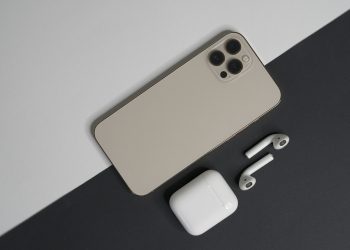Today’s update brings more exciting information about the Pixel 8 and Pixel 8 Pro, with particular focus on camera enhancements. Feel free to share your preferences in the comments regarding the upcoming features of these new Pixels.
Let’s start by addressing the less favorable news. Yogesh Bhatt has indicated a potential price increase ranging from $50 to $200 for all major smartphones this year, including the Pixel 8 series.
It’s worth noting that devices falling within this category, including the Pixel line, usually target more budget-friendly pricing. The positive side of this is that I anticipate the Pixel 8 series to position itself at the lower spectrum of this range.
Further insights from Roland Quandt confirm that the Pixel 8 Pro will offer storage options of 128GB, 256GB, or 512GB, coupled with a selection of 8GB or 12GB of RAM. In contrast, the standard Pixel 8 will present a choice between 128GB and 256GB of storage, with all variants equipped with 8GB of RAM. These configurations align with those of the previous year, and no substantial alterations were anticipated.
Moving on, Android Authority’s report unveils not only camera system upgrades for the Pixel 8 but also software enhancements and a revamped user interface.
The software enhancements include staggered HDR, which intelligently introduces slight time gaps between frames to expedite the image capture process. Additionally, segmented auto white balance is introduced to bring more authentic post-processing adjustments to specific sections of an image, resulting in enhanced accuracy.

In terms of user interface changes, settings options have been relocated to the lower left corner, accessible through a swipe-up gesture. This reconfiguration aims to optimize one-handed usability.
Notably, the new UI showcases features like Action Pan, Portrait Long Exposure, Nightside, and Panorama directly in the main bar, eliminating the need to navigate through a separate motion tab.
Amidst the rumor mill, discussions regarding exclusive eSIM functionality on the new Pixel 8 series have surfaced, although these claims seem implausible.
Related Article
- Tab S9 Ultra vs M2 iPad Pro – A Comprehensive Faceoff
- How X Actually Killed Threads? Cracking the Code
Max Weinbach asserts that Google lacks the influence to execute such a substantial change without alienating users, a move Apple made with certain models last year. As of now, it appears unlikely that other manufacturers will follow suit.

For those who may have missed it, a leaked teaser from the past week provides a comprehensive glimpse of the Pixel 8 Pro’s design and introduces a new feature called “Audio Eraser.” This development adds to the anticipation surrounding these upcoming devices. Let’s take a look at what the teaser reveals.
Upon observing the clip, it’s evident that the audio arrays are performing exceptionally well. I’m eagerly anticipating the opportunity to test out this innovative feature.
While Google doesn’t incorporate the very latest flagship chips into their phones, they consistently provide remarkable AI tools that continue to improve over time.
There have been numerous indications that a new video blurring feature, akin to the existing photo blurring, is in the pipeline. Its application to videos is an exciting prospect.
The question remains whether these enhancements will be exclusive to the Pixel 8 or if they’ll also extend to the previous Pixel models. The conclusion of the teaser affords us a clear view of the blue Pixel 8 Pro.
Related Article
- Pixel 8 & 8 Pro: EVERY SINGLE detail you NEED to know!
- What would happen if Samsung and Apple phones were removed from the world?
The design aligns precisely with the renders that Google has unveiled over the past months. This provides a strong indication that the Pixel 8 Pro’s final design will closely resemble what we’re seeing.
Starting with the standard Pixel 8 model, the device boasts a 6.17-inch flat display. This Full HD Plus OLED screen operates at 120Hz and offers a resolution of 2400 by 1080, with a peak brightness reaching 1400 nits. Selfies are captured through a 10.8-megapixel punch-hole camera.
On the rear, the primary camera is a 50MP Pixel Samsung GN2, accompanied by a 15-megapixel Sony IMX 386 for ultra-wide shots. The device is powered by Google’s latest Tensor G3 chipset and offers a choice between 8GB of RAM and storage capacities of either 128GB or 256GB.
The phone houses a 4485mAh battery, which can be charged via 24-watt wired charging or 20-watt wireless charging. Additional features include 5G support, Bluetooth 5.3, Wi-Fi 7, and an integrated ultra-wideband chip. Naturally, the phone will ship with Android 14.
Moving on, let’s delve into the details of the Pixel 8 Pro. A groundbreaking addition to the Pro lineup is the 6.7-inch 120-hertz flat display. Boasting a resolution of 2992 by 1344, this translates to a pixel density of 490 pixels per inch. Notably, it achieves a peak brightness of 1600 nits.
For capturing self-portraits, there’s a 10.8-megapixel punch-hole camera. Shifting to the rear, the camera setup is impressive: a 50-megapixel Samsung GN2 as the primary camera, a 64-megapixel Sony IMX 787 handling ultra-wide shots, and a 48-megapixel GM5 for telephoto, boasting five times optical zoom capability.
The device runs on Google’s cutting-edge Tensor G3 chipset. It’s available with a choice of 8 or 12 gigabytes of RAM and storage options including 128GB, 256GB, or 512GB.
Powering all this is a robust 4950 milliamp-hour battery which supports 27-watt fast wired charging and 23-watt wireless charging. Connectivity features encompass 5G support, Bluetooth 5.3, Wi-Fi 7, and Ultra-Wideband. An intriguing addition is the new temperature sensor, a debut in the Pixel series.
Upon release, the phone will come preloaded with the latest Android 14. As with pricing, there’s still anticipation for official pricing details, but it’s anticipated to range from $950 to $1000.
Both the Pixel 8 and Pixel 8 Pro boast subtle design refinements. Google, as usual, has concentrated on AI-driven functionalities while striving to provide a seamless user experience, a hallmark of their previous releases.
A noteworthy adjustment is the shift to flat displays, even on the Pro model, a decision that addresses consumer concerns about curved screens.
With the release nearing, leaks are inevitable, and it’s likely that substantial information will be available prior to launch. Rest assured, I’ll promptly share any updates as they emerge. To stay in the loop, don’t forget to subscribe.
Thanks for watching and if you enjoyed this video, don’t forget to give it a thumbs up and share it with your friends. Stay tuned for more exciting tech videos. See you in the next one!
